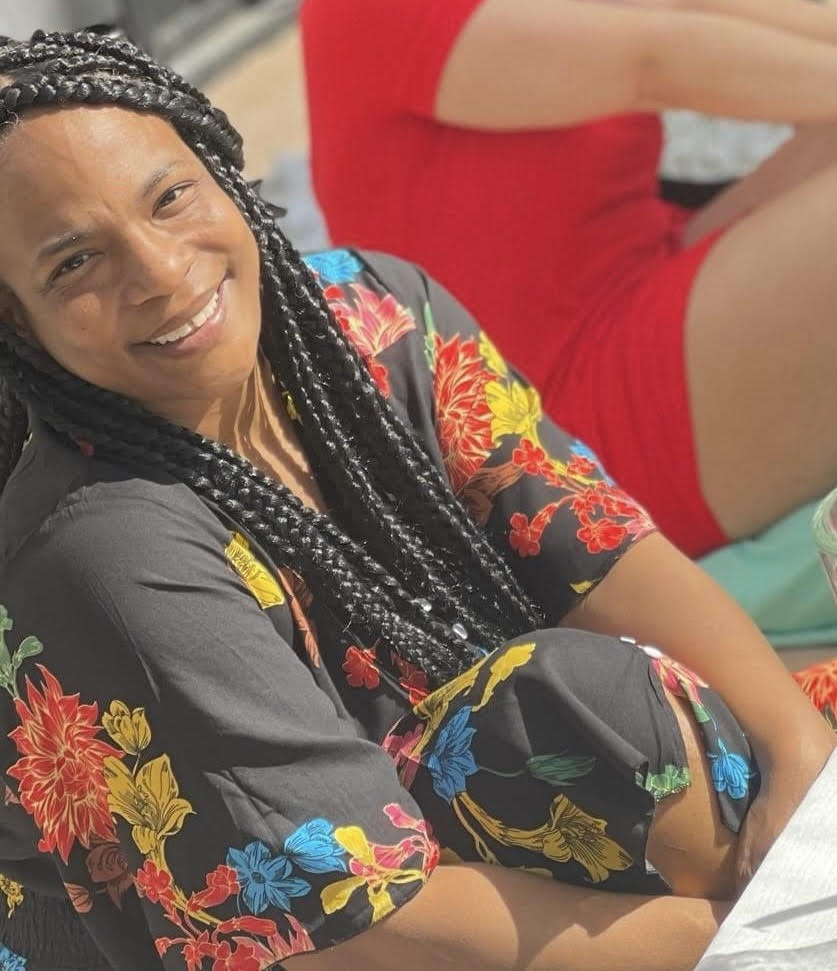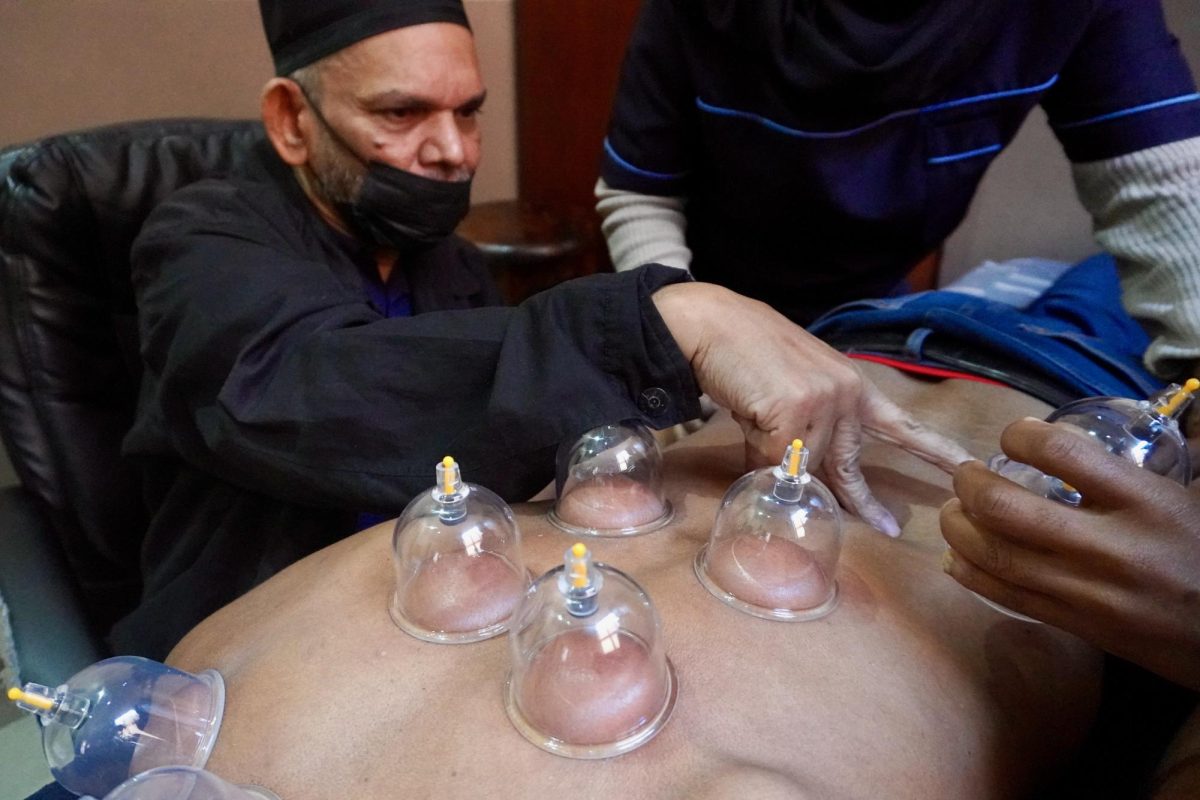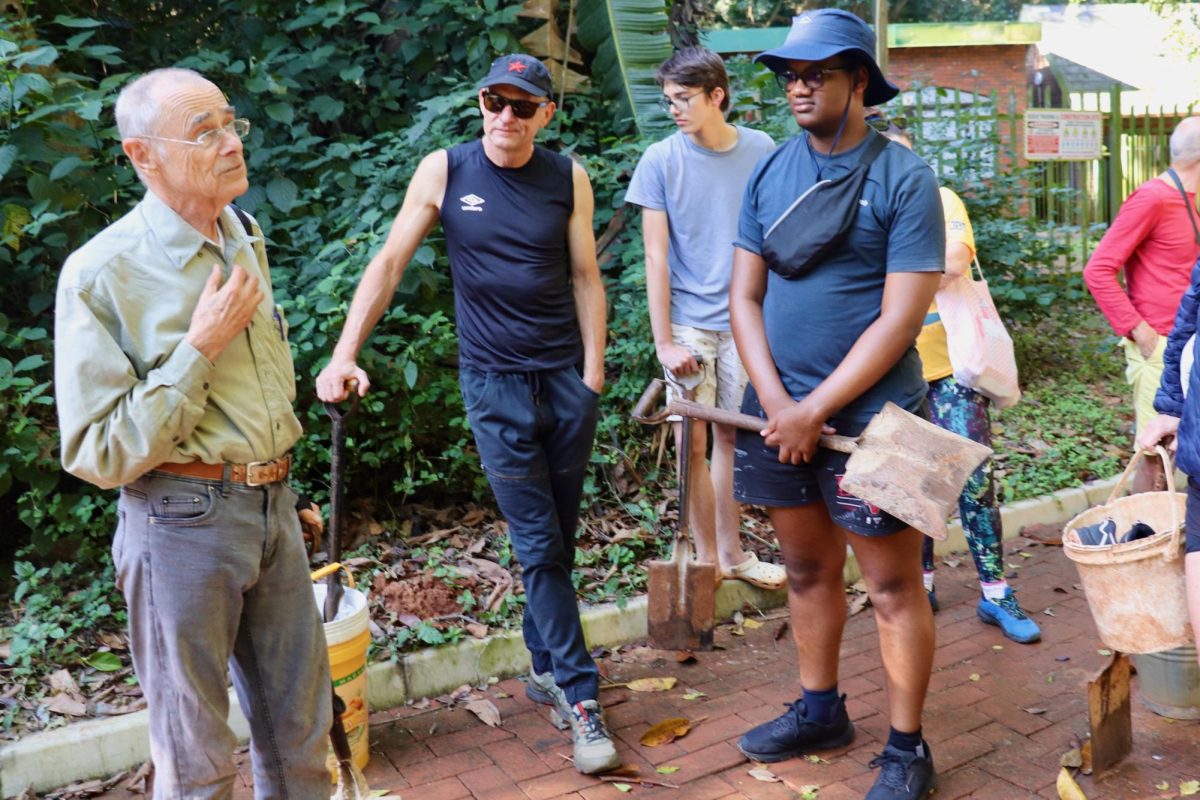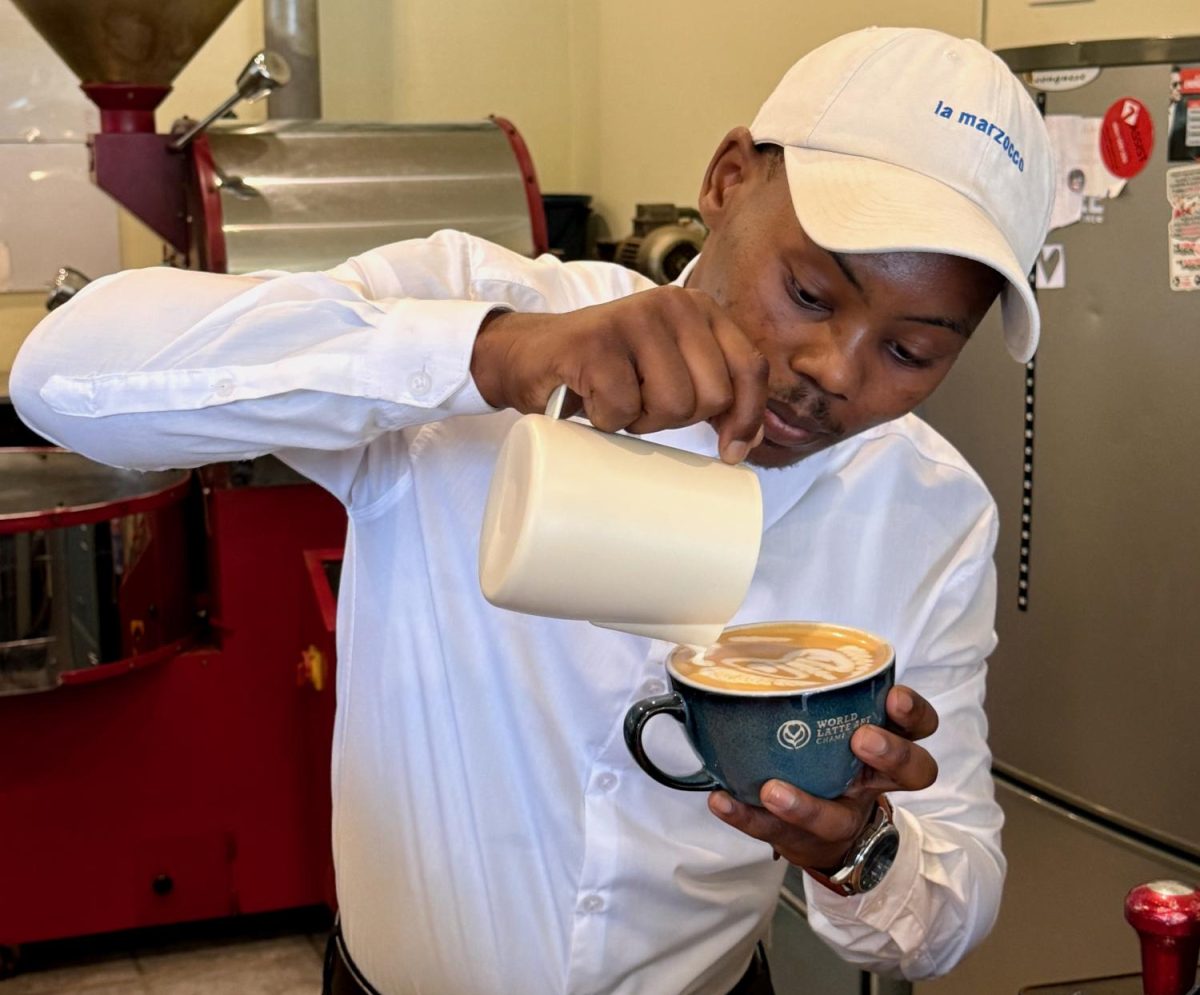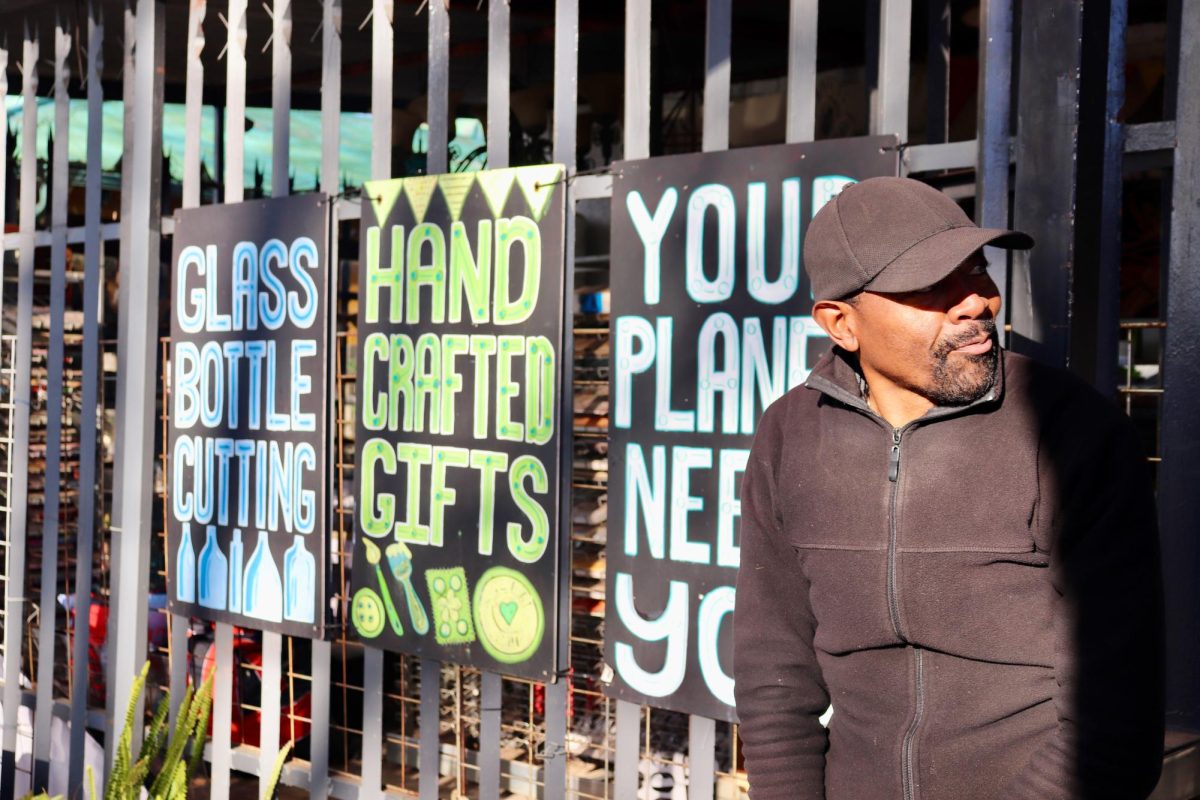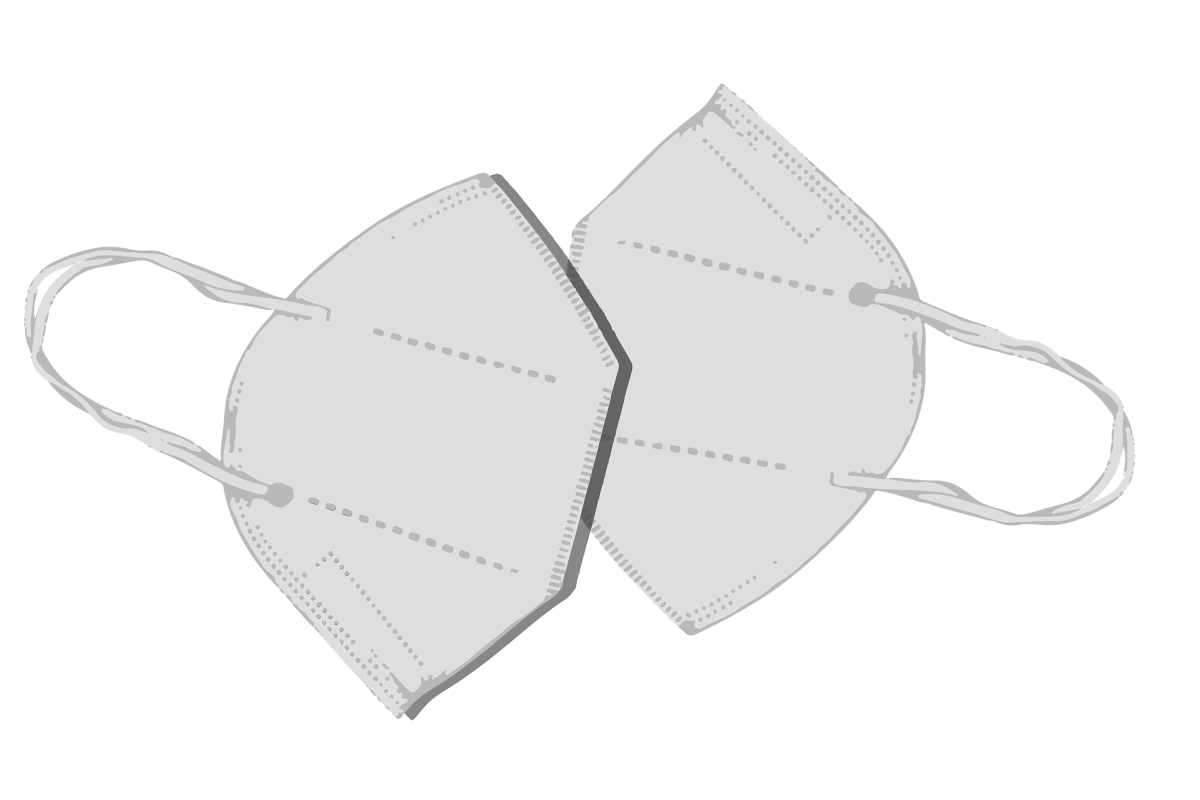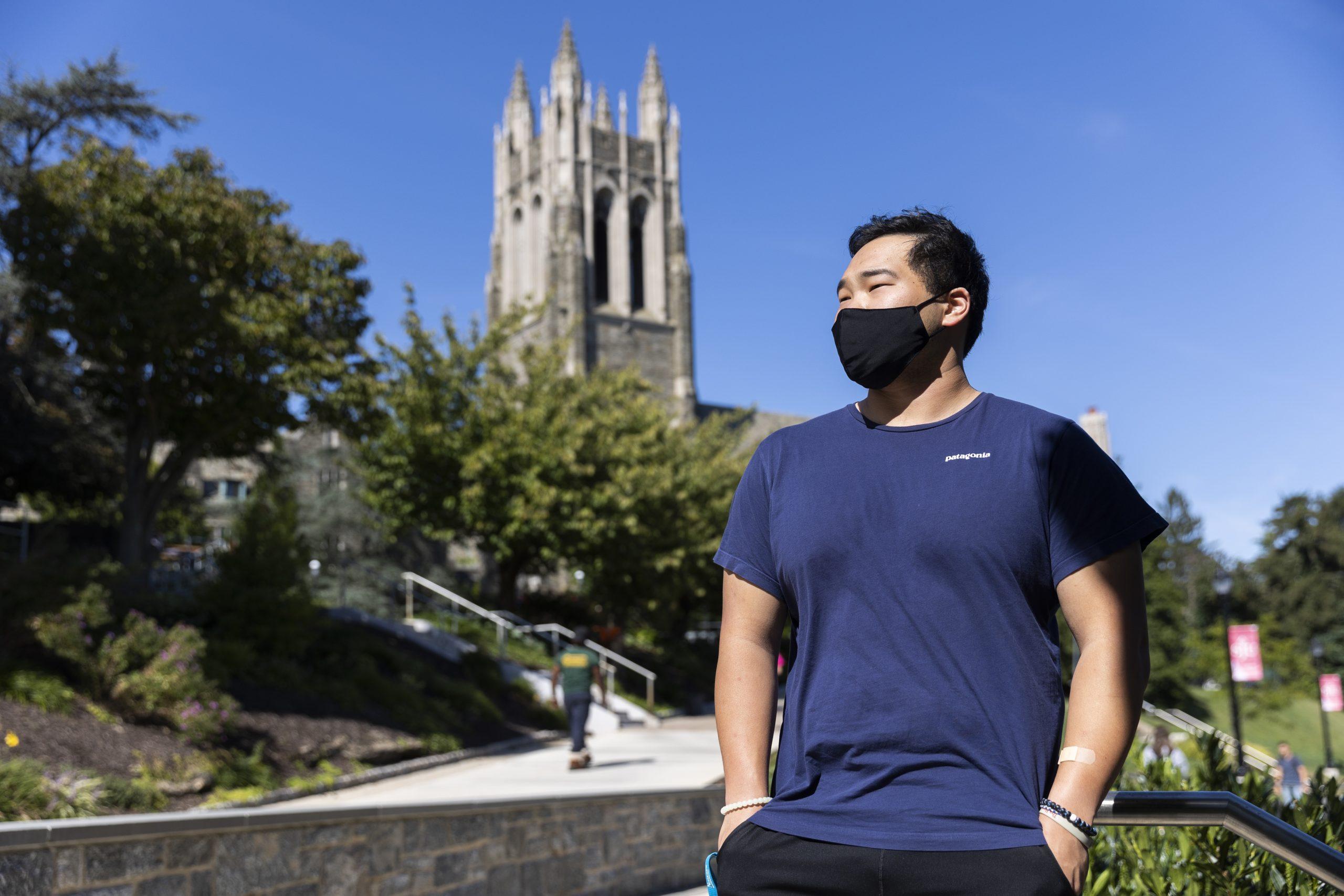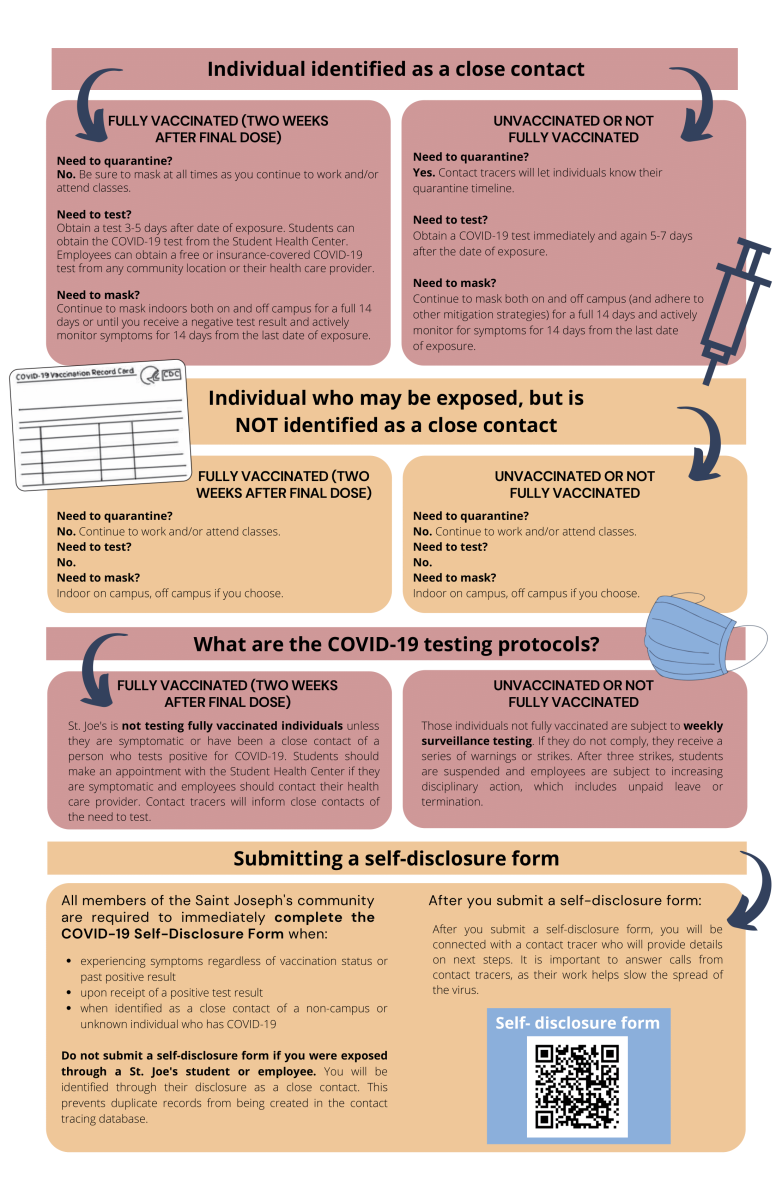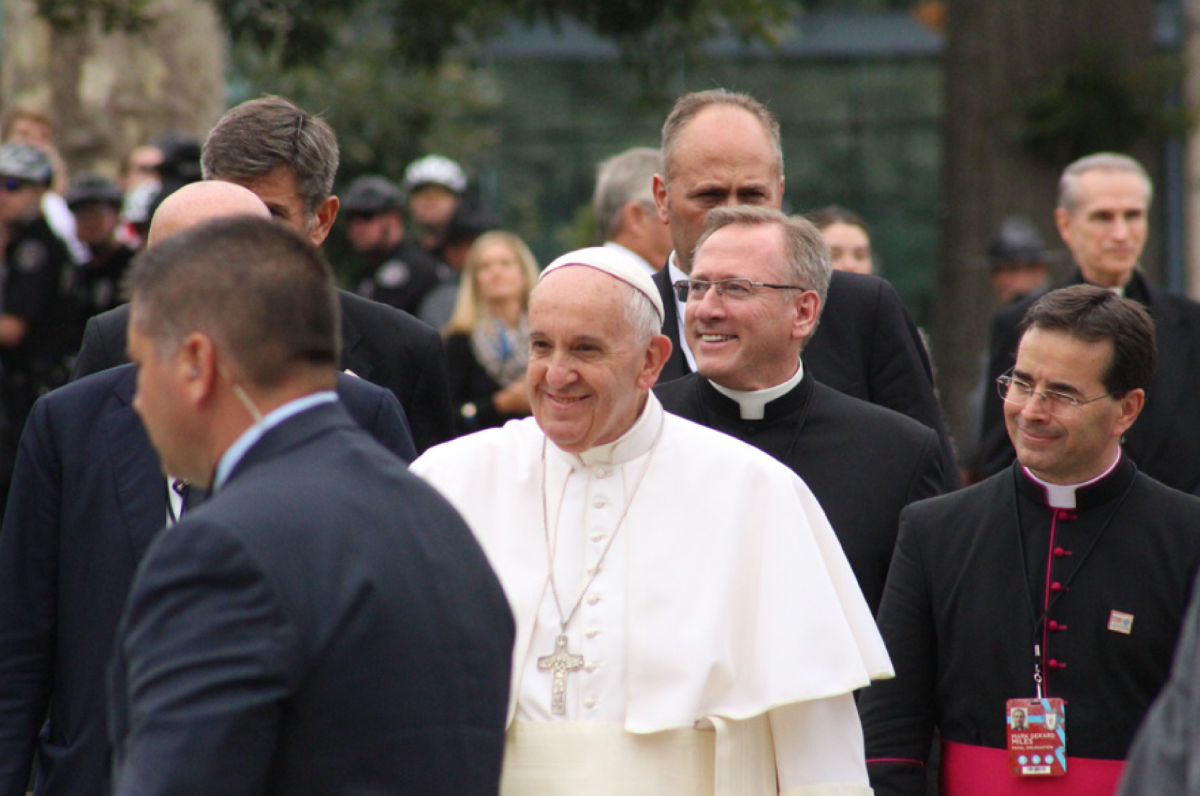The St. Joe’s community was in the midst of adjusting to an unprecedented first day of school on Aug. 24 when the university announced that campus-arrival testing, which had previously been recommended, was now mandatory.
Anyone living, working or learning on campus had until 3 p.m. on Aug. 28 to get their test done, according to the Aug. 24 university announcement.
Approximately 4,600 members of the St. Joe’s community were tested by the Aug. 28 deadline, according to Gail Benner, director of Public Relations and Media, who answered questions from The Hawk that were directed to her by multiple sources who declined to answer.
Benner wrote in an email to The Hawk that the reason for the sudden shift to mandatory testing midway through the first day of classes was not for financial reasons, but a realization that the university needed to be more explicit about its expectations.
The university committed significant resources to the week-long testing effort, including staff and faculty time and training, supplies and test kits, Benner wrote.
Benner also referenced in her email response the university’s iCare Pledge, in which all St. Joe’s community members pledged and vowed to do their part in upholding the university’s Health and Safety Plan by following guidelines informed by the latest science.
“The university asked everyone to take the iCare Pledge, committing to following health and safety guidance,” Benner wrote. “After the few days of testing, we realized that we needed to be more explicit about the expectations for testing.”
The Hawk reached out to Cary Anderson, associate provost and vice president for Student Life with questions regarding how the school would enforce the new testing mandate.
In response to those questions, Benner wrote in an email to The Hawk that the university does not have an accurate number of how many campus members have yet to be tested and is in the process of cross-referencing people who are learning or working remotely or who have a medical reason not to test.
As for a contingency plan for students who did not take part in the mandatory testing, Benner wrote that “the University will follow up with these individuals.”
While many community members received their test results within the promised 48-72 hours, some experienced up to a week in delays.
Skylar Morgan ’22 was tested on Aug. 23. At the time, she was attending in-person classes. When Morgan found out that she had interacted with individuals who later tested positive, she went into voluntary self-isolation. Five days later, she received her test results, which were negative for COVID-19.
“Thank God I was negative but there could also just be people positive that were walking around,” Morgan said. “I think it should have been mandatory beforehand just to kind of help the situation and also give the university a glimpse into what they were walking into.”
Judith O’Donnell, director of the Department of Infection Prevention and Control at Penn Presbyterian Medical Center, said it would have been ideal for students to get their results before classes started, or even during their move-ins. The time between arriving on campus and receiving a negative test is crucial and not having community members quarantine during that period could counteract the goal of testing.
“If you don’t ask [university members] to quarantine, then you run the risk of having individuals around the campus who may be asymptomatic, spreading disease, or may become symptomatic while [they are] waiting for the test results to come back,” O’Donnell said. “You sort of defeat the best aspects of trying to do a population based testing approach by allowing people to move around.”
Mass testing is only effective when individuals are asked to quarantine until their test results come in and when test results are returned in a timely manner, O’Donnell said.
“If population-based testing, like on a campus, is going to be effective, then when you would test individuals you would ask them to quarantine until their results are back in case they’re positive and they don’t know it,” O’Donnell said. “It’s the asymptomatic person who could be spreading who’s the risk in these types of closed populations. To keep everybody safe, then the test results should come back in a reasonable time period.”
The Aug. 24 university announcement did not state that individuals should quarantine while waiting for their results. And since classes had already started, students like Ellie Bleeker ’21, said they didn’t feel like they had much choice but to go to class while they waited for results.
Bleeker got tested on Aug. 22. By the time she received her results late in the day on Aug. 27, she had already attended face-to-face classes.
“I think it’s kind of odd that we were getting test results after we were already in the classrooms,” Bleeker said. “Because if one person tested positive, that probably would have wiped out five classes.”
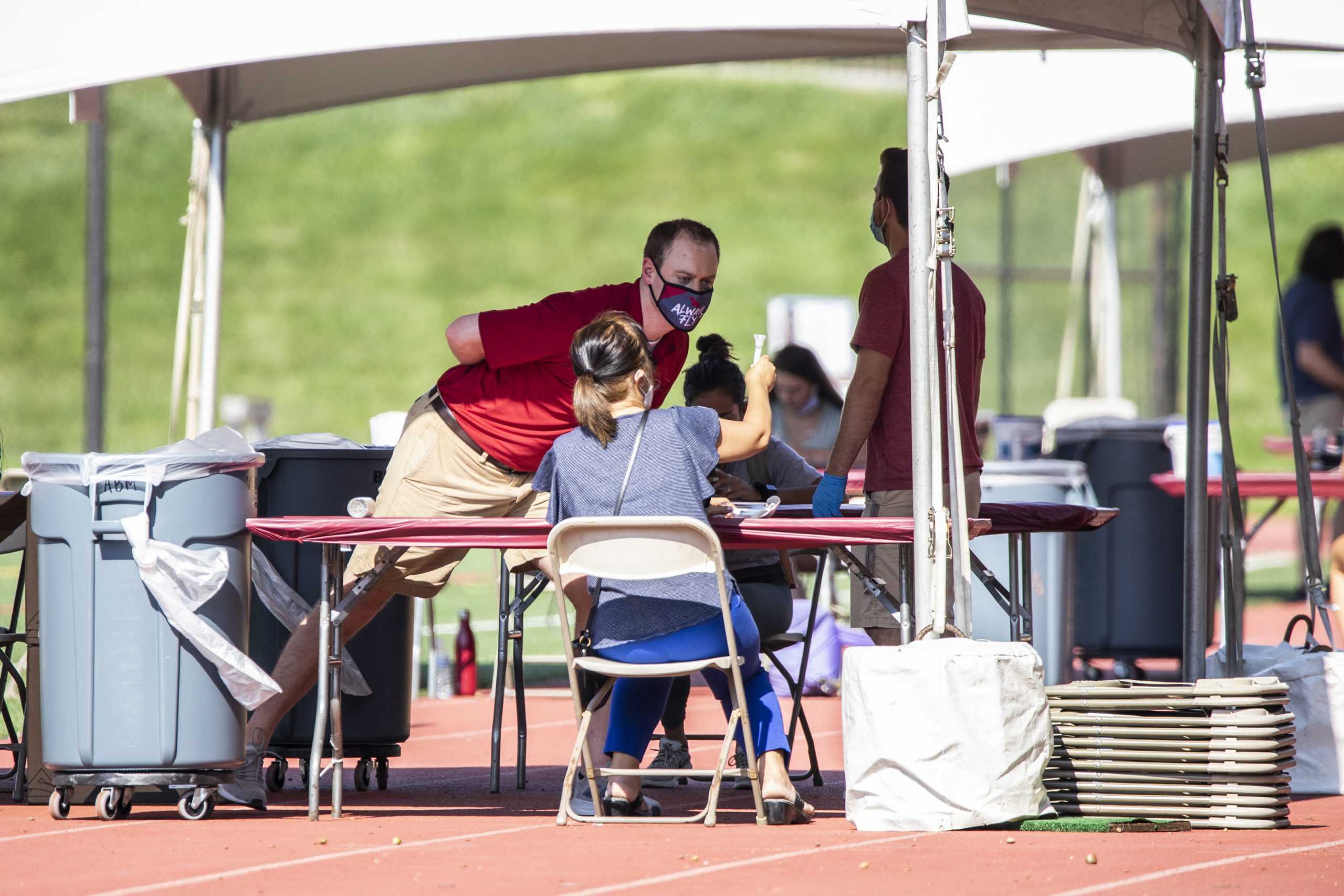
The university has maintained the position that with masks and physical distancing in place in face-to-face classrooms, exposure risk is minimal.
For Todd Erkis, visiting professor of finance, campus-arrival testing helped him to realize he was infected with the coronavirus. He was tested on Aug. 17, and started feeling symptoms in the form of aches the next day and was ultimately informed he tested positive on Aug. 19. Erkis went on to inform all of his classes about his situation, as well as anyone he had recently been in contact with.
“I am glad the testing is being done and everyone should get tested,” Erkis said. “If the testing had to be mandatory for everyone to get tested, then that is a good thing in my opinion.”
While Erkis quarantined at his home, residential students who have tested positive were given the choice of quarantining at home, in a designated residence hall on campus or at a nearby hotel when the residence hall reached capacity.
Some students who needed to quarantine have been transported by university shuttles to the Homewood Suites on City Avenue. There they are delivered meals and contacted daily by contact tracers and representatives from Counseling and Psychological Services to check on their mental health during their quarantine.
Benner would not say how many students are currently in quarantine in Sourin Hall or at the hotel.
“We will not release exact numbers of students in various quarantine and isolation spaces for privacy reasons,” Benner wrote.
Throughout the fall semester, testing will continue to be available for students experiencing symptoms through the Student Health Center, according to the Aug. 28 university announcement.
The university directed faculty and staff experiencing symptoms to their personal medical providers to get tested.
Benner confirmed that the university is in the process of determining further follow-up testing plans.
O’Donnell stressed that regular, frequent, mandated testing of all university members is important, as it can identify asymptomatic individuals.
“It’s not just a single test in time,” O’Donnell said. “It’s testing over time. That’s the most helpful way to utilize testing as a tool to prevent or mitigate spread, because you test everybody at time zero, and they’re negative but that doesn’t mean that they can’t be positive two days later. If you’re testing regularly, then you may be able to more quickly prevent the further spread of the disease by identifying these asymptomatic individuals and quarantining them and preventing them from spreading it further.”
But O’Donnell said that a significant challenge is that the ability to test quickly and frequently is often “an idea, but not a reality for the United States right now.”
Vault, the company that conducted St. Joe’s campus testing, currently has individual tests listed at $150, but has bulk pricing available for organizations to purchase testing kits and conduct testing on-site.
Bleeker said it is important the university continue to invest in frequent testing.
“It’s definitely tough with how expensive these tests are, but I definitely think the university is able to allocate funds for frequent testing because that’s so important,” Bleeker said. “And a lot of people aren’t going to get tested again if they don’t have symptoms, and that’s not always the case with coronavirus.”
Benner wrote that the launch of a dashboard to track university-wide positive test results was published as planned on Aug. 28.
As of press time, the university reported 11 positive cases.
The dashboard is expected to be updated on a weekly basis, Benner wrote.
Benner said St. Joe’s plans to continue on-campus operations up to Thanksgiving Break.
“We are not planning to change course unless public health conditions absolutely warrant it,” Benner wrote. “Our positive case counts are very low and manageable, and we have health and safety mitigation strategies in place.”












